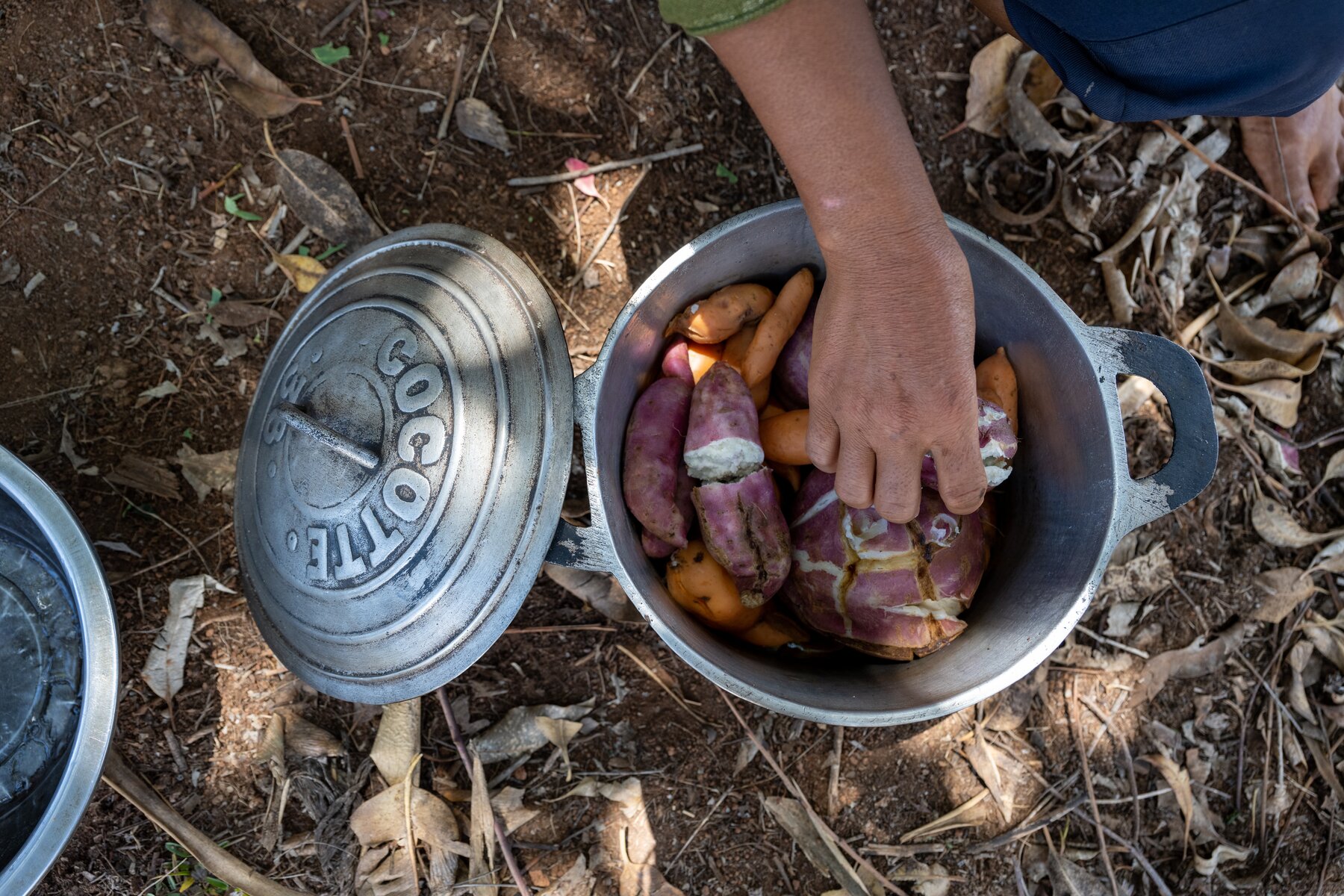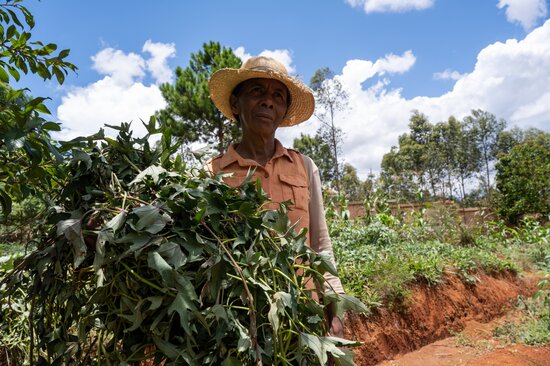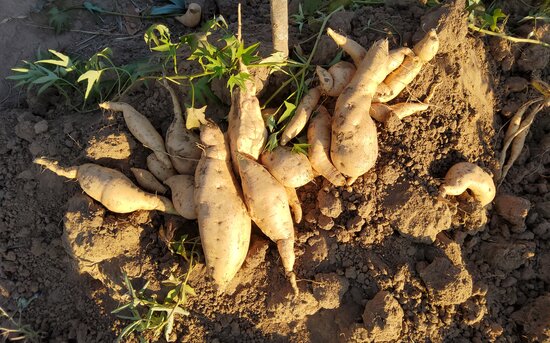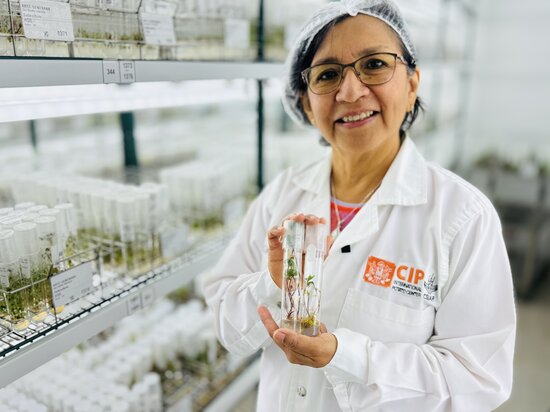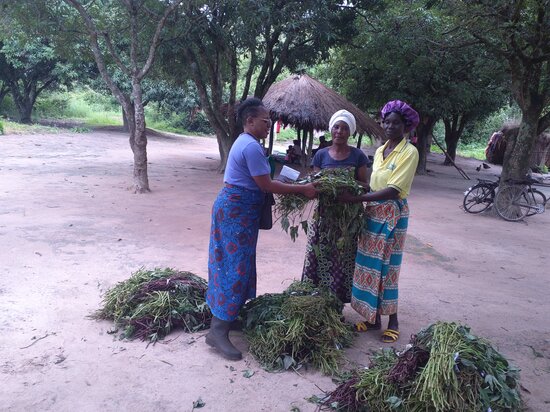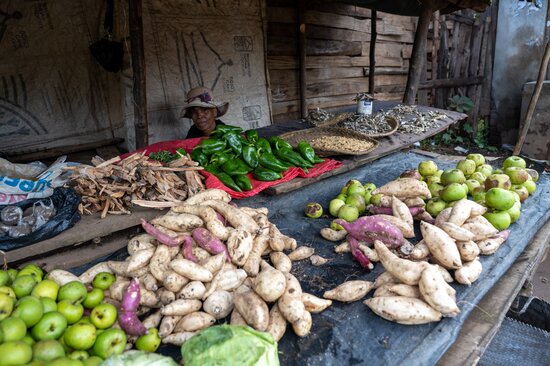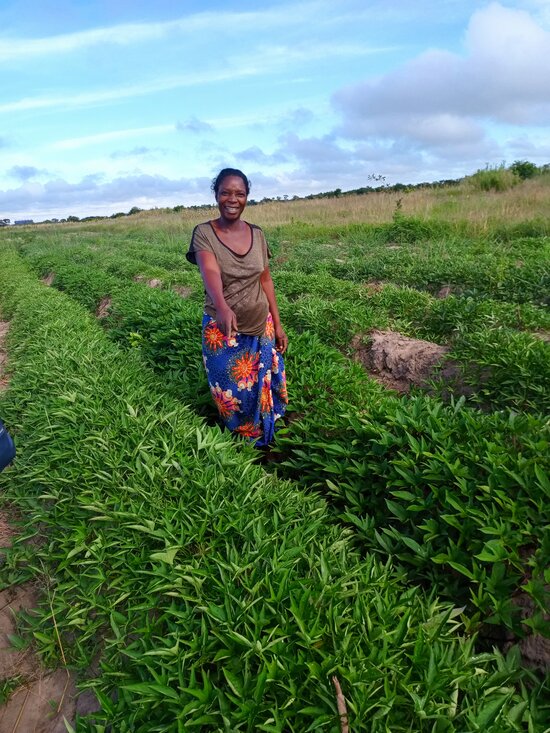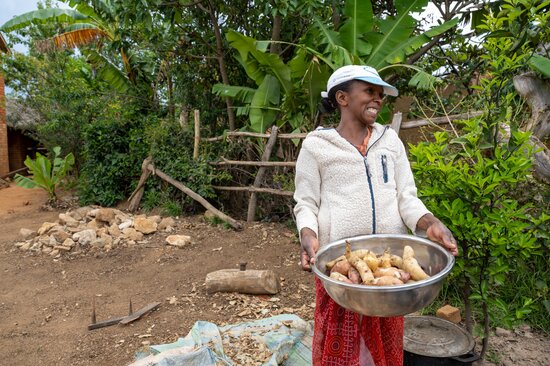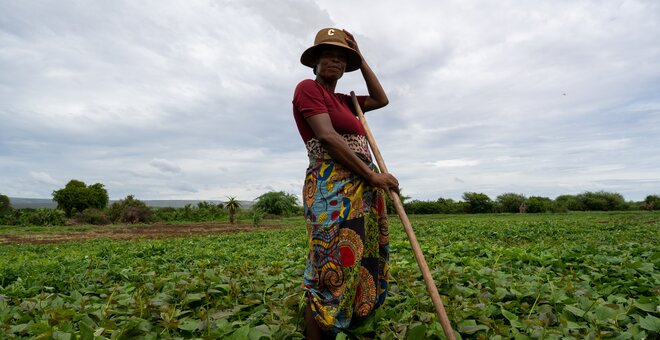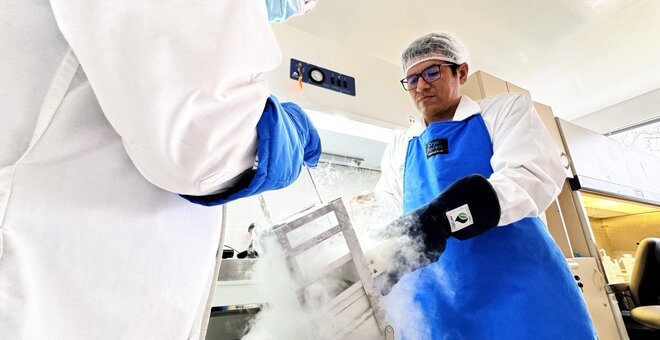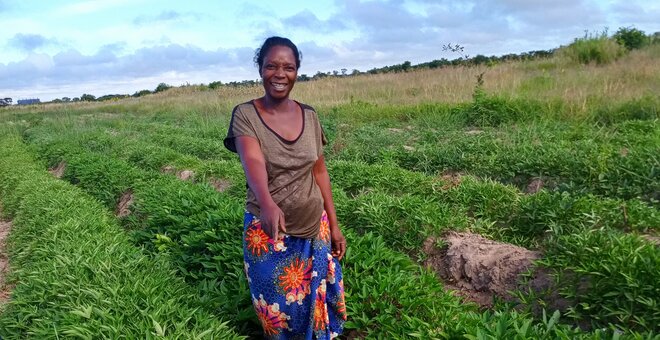The Sweetpotato Project Funded by the Darwin Initiative
Years active: 2022 - 2025
The Sweetpotato Project was a three-year effort to safeguard sweetpotato diversity in Madagascar and Zambia and promote its use by farmers as part of resilient local agriculture.
- More than 300 sweetpotato landrace varieties were collected
- 30 landraces from Madagascar and Zambia have been conserved in cryopreservation and added to the genebank of the International Potato Center (CIP)
- 56 landraces were repatriated to farmers in Madagascar and Zambia after they were cleaned of pests and diseases
- Over 100,000 clean vines have been distributed to 355 farmers in Madagascar and Zambia.
By the end of the Darwin Initiative-funded Sweetpotato Project, sweetpotato diversity from Madagascar and Zambia had been both safeguarded and delivered into the hands of farmers. Not just a race to rescue vanishing varieties in genebanks, this was also a community effort to plant, share and value diversity in local fields.
The clean, healthy vines now thriving in farmers’ plots are more than crops – they’re lifelines. They will continue to feed families, support incomes and strengthen resilience in the face of a changing climate. Meanwhile, cryopreserved sweetpotato samples secured at CIP in Lima serve as a global insurance policy, ready to restore what might one day be lost in farmers’ fields.
At the heart of this success lies the ‘Clean & Share’ model, an approach that could transform the conservation and use of clonal crops beyond sweetpotato.
In just three years, the project achieved several major milestones. It rescued and restored diversity, reinforced conservation systems from farm to genebank, and delivered lasting benefits to hundreds of farming families.
This is the legacy of the Sweetpotato Project – a sprint that created long-term impact, a bridge between past and future, and a foundation for food systems that are more resilient, nutritious and sustainable.
Why Sweetpotato?
Sweetpotato is a powerhouse crop that combines the energy of cereals, the vitamins of fruit, and the minerals of vegetables. It is rich in starch, dietary fiber, protein, and micronutrients such as iron, vitamin C, vitamin E and provitamin A. This is a unique combination for nutrition.
Sweetpotato thrives in drought-prone areas where many other crops fail, making it a lifeline for smallholder farmers facing increasingly unpredictable weather. Globally, more than two billion people depend on sweetpotato for food, and it is one of the most important root crops in sub-Saharan Africa.
‘Clean & Share’
The project’s core innovation was the ‘Clean & Share’ model. This involves collecting local sweetpotato landraces from farmers, cleaning them of viruses and other diseases using techniques such as meristem culture and thermotherapy. And, finally, sharing the cleaned planting materials back with farmers while also conserving them long term in a genebank.
The model ensures that valuable crop diversity is not only preserved for future generations but also returned to the communities that nurtured it, improving productivity and resilience on farms.
In Madagascar and Zambia, partners collected over 300 farmer landraces under the project. These were genetically fingerprinted to assess uniqueness, cleaned of diseases, and repatriated. Farmers received more than 100,000 clean vines, far exceeding the original target of 60,000. Many shared their planting material with neighbors, extending the project’s reach beyond its direct beneficiaries.
In Zambia, farmers reported improved yields, better-looking, market-ready tubers, and increased incomes. Some expanded cultivation from small household plots to half-hectare or larger fields, with one farmer anticipating a USD 1,200 income boost from sweetpotato sales. In Madagascar, after planting the clean vines, farmers noted stronger plants, reduced pest presence and improved year-round food supply, with nearly three-quarters reporting more consistent sweetpotato availability.
Going Global
Long-term conservation of sweetpotato is challenging because it is a clonal, or vegetatively propagated, crop that cannot be stored as seed. Instead, it must be preserved as living plant material. This project was part of the Global Plant Cryopreservation Initiative, which uses liquid nitrogen to store plant tissue at ultra-low temperatures.
Cryopreservation stops all biological activity, allowing plant material to be conserved indefinitely. When needed, the frozen material can be carefully thawed out and grown into a healthy, fully functional plant.
Before this project, the global sweetpotato collection at CIP in Lima contained only two varieties from Madagascar and four from Zambia. By project’s end, 30 new landraces from Madagascar and Zambia were successfully added to the CIP cryobank, safeguarding them under the International Treaty on Plant Genetic Resources for Food and Agriculture.
More Capacity and Collaboration
Before the project, neither the Zambia Agricultural Research Institute (ZARI) nor Madagascar’s Fiompiana Fambolena Malagasy Norvéziana (FIFAMANOR) had the facilities or skills to manage sweetpotato planting material that is clean of pests and diseases. Over three years, the project provided training in in vitro multiplication, DNA marker analysis and disease management. It also built facilities for vine multiplication, ensuring national partners can continue the work.
The project also fostered collaboration between genebanks, government agencies and farming communities. It aligned with Madagascar’s National Strategy and Action Plan on Plant Genetic Resources for Food and Agriculture (2018-2025) and Zambia’s Second National Biodiversity Strategy and Action Plan (2015-2025), embedding the conservation and use of sweetpotato diversity into national priorities.
A Model for the Future
The ‘Clean & Share’ model has proven it can work quickly and effectively. In just three years, the project went from collecting infected sweetpotato varieties in farmers’ fields to returning clean planting material to those same farmers, while securing the diversity in a global genebank.
This approach can be applied to other clonal crops, such as cassava, yam and banana, helping communities safeguard their agricultural heritage while improving productivity and resilience.
The Darwin Initiative-funded Sweetpotato Project has shown that when genebanks and farming communities work together, we can protect crop diversity, boost food security and build resilience to the challenges ahead.
Partners
-
CIP (The International Potato Center)
-
Fiompiana Fambolena Malagasy Norvéziana (FIFAMANOR)
-
ZARI (Zambia Agriculture Research Institute)
Supporters
-
CGIAR
-
Crop Trust
-
UK Government’s Darwin Initiative
Related News
Darwin Initiative: Celebrating Sweet(potato) Success
The Crop Trust is proud to see the success of the Sweetpotato Project celebrated by the Darwin Initiative. The story highlights how farmers in Madagascar are now harvesting bigger, healthier sweetpotatoes thanks to clean planting...
7 Nov 2025
CGIAR: Leave No Crops Behind - The Case for Cryopreservation
The need for coordinated global action on the cryopreservation of crop diversity is clear, according to a recent article published by CGIAR. Cryopreservation is a technique used to conserve samples of plants that cannot be stored...
27 Jan 2025
Darwin Initiative: Sweetpotato Project Strengthens Communities
The Crop Trust is coordinating the Sweetpotato, a model for food security and long-term conservation of biodiversity project. The Sweetpotato project is featured in the Darwin Initiative’s latest newsletter, Local Learnings from...
13 Dec 2024

